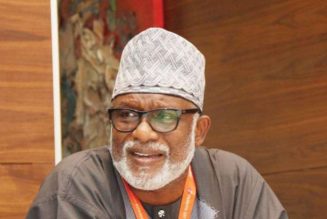Data Hub
How to make education tech work for all in Kenya
Wednesday September 27 2023

EdTech is about improving access to decent education and promoting inclusivity. PHOTO | POOL
The power of emerging education technology (EdTech) to increase digital literacy and improve learning outcomes cannot be gainsaid.
While there are efforts worldwide to widen the use of EdTech, in Kenya, a lot more work needs to be done to fully achieve the ‘leaving no one behind’ goal.
A multi-sectoral approach, as suggested at a Kenya EdTech summit this month will bring the country closer to the goal.
The two-day summit, held in Nairobi, explored ways of addressing limitations that impede digital teaching and learning.
Read: Two Kenyan health startups picked for Google AI Growth Academy
From building digital infrastructure to evidence-driven policy, the summit brought to the fore ideas for sustainable, impactful, and practical measures that are key to helping bridge the gap in EdTech, so that disadvantaged schools are brought to par with better-endowed learning institutions.
There have been previous efforts to promote digital learning in schools in Kenya, but these have faced a plethora of challenges, slowing down the whole EdTech agenda. Consider the government’s digital learning programme initiated in 2013, aimed at providing all public schools with laptops and tablets.
Critics termed the action as unsustainable and poorly thought out, given the challenges of poor infrastructure, such as dilapidated school buildings in some areas, and questions of how pupils studying under trees would reap the benefits of ‘sophisticated technology’.
The issue of electricity supply came up, as well as the frequent outages that still haunt schools connected to the national grid.
With the alternative of solar panels, there have been reports of schools being disconnected due to poor maintenance of the systems or following strong winds that blow off the roofs of classrooms, and in the process destroying power supply systems.
These are important concerns that need addressing. Let’s draw from the thoughts of one Anne Kibara, an award-winning teacher who spoke at the recent Kenya EdTech Summit.
The teacher at Ngundu Primary and Junior School, in the outskirts of Nairobi, argued that there should be no one-size-fits-all approach. “Don’t standardise the interventions for digital learning, as what works in one area may not work in another,” she stressed.
Perhaps a one-size-fits-all has been our undoing. Experts have continuously called for digital learning and teaching architecture to be mindful of all, including nomadic communities, where learning can be interrupted because of the nature of their livelihood. How can we best ensure that digital learning benefits such communities?
For example, in Kajiado, though school enrollment has been increasing over the past two decades, the quality of grades across all levels of learning has been decreasing.
This is according to the Pastoralists Integrated Concerns Organisation, which operates in the county and seeks to bridge the digital gap in education.
Perhaps their approach of developing a manyatta-based learning programme, which has seen the establishment and equipping of several learning centres spread across the county with digital devices, trained and engaged community volunteers to facilitate learning in each centre, is one to borrow from.
The approach has also involved capacity building of parents to impart them with digital skills and mobilise them to be meaningfully engaged in their children’s education.
It is obvious that for digital learning to be effective, it must target not only the students but teachers as well. There have been calls for regular training of more teachers in ICT skills to achieve better learning outcomes.
As is the case now, it is not uncommon that only one teacher is trained in a school and is expected to teach the rest and the students as well. This cannot yield much.
Similarly, the Global Education Monitoring Report 2023, titled ‘Technology in Education: A Tool on Whose Terms?’ highlights that “Teachers often feel unprepared and lack confidence teaching with technology. Only half of countries have standards for developing teacher ICT skills.”
Read: OUYA: Bridge the teachers’ training gap for successful delivery of CBC
Therefore, solutions must be designed to suit diverse contexts, including policies that will require the following digital literacy interventions: Equity; inclusivity; accessibility; and affordability.
It is noteworthy that Kenya has no shortage of policy regulations. However, the onus is on stakeholders to collaborate and ensure technology in education reaches its full potential.
As the CEO and Co-Founder of EdTech East Africa, Jennifer Cotter-Otieno put it: “No one person will make it work. It is going to take all of us to work with one another, with the community, and build solutions that work.”
The writer is a communication specialist based in Nairobi ([email protected])









